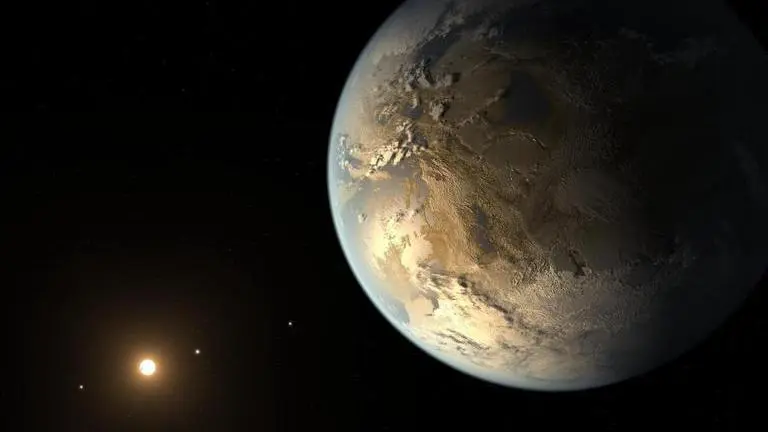Updated 4 August 2022 at 17:17 IST
Earth-like exoplanet with possible conditions for life discovered 37 light-years away
The Earth-like exoplanet named Ross 508 b is orbiting a red dwarf star located roughly 37 light-years away and is suspected to have life-supporting conditions.
- Science News
- 2 min read

An Earth-like planet that skims through the habitable zone around its parent star has been discovered by a new team of astronomers. Dubbed Ross 508 b, the planet is actually a super-Earth, meaning its size is about four times the mass of our planet and might have conditions that allow water to exist in a liquid state. This discovery has intrigued scientists as the exoplanet might serve as an important target for future observations to verify the possibility of life around low-mass stars.
Could the planet host life?
Discovery Alert!
— NASA Exoplanets (@NASAExoplanets) August 3, 2022
A recently discovered exoplanet skims in and out of its star's habitable zone. It's 37 light-years from Earth and about four times our planet's mass, making Ross 508b a super-Earth. A year there, one orbit, takes just 10.8 days! https://t.co/qmEDhIuS3A pic.twitter.com/MW7Cap45If
It is worth noting that the planet transits a red dwarf star named Ross 508 in and out of the habitable zone as opposed to the Earth, which orbits the sun in a continuous habitable path. A red dwarf star is smaller but longer lived than our own Sun and they are also relatively cooler because of their size. The Ross 508, in this case, is about one-fifth the mass of the sun and the exoplanet around it completes one orbit in just under 11 days.
(Habitable zone shown as the green band around Ross 508; Image: Astrobiology Center)
The new exoplanet has been discovered using a new infrared monitoring technique through the instrument named InfraRed Doppler instrument (IRD) developed by the Astrobiology Center in Japan. This instrument which is the world's first high-precision infrared spectrograph for 8-metre class telescopes, was mounted on the Subaru telescope in Hawaii to detect minute wobbles in the velocity of the red dwarf star. The use of the infrared instrument arose because the red dwarfs are very faint in visible light due to their low surface temperature of less than 4000°C.
Advertisement
"Ross 508 b is the first successful detection of a super-Earth using only near-infrared spectroscopy", Dr. Hiroki Harakawa (NAOJ Subaru Telescope), the lead author of the discovery paper, said in a statement. "It has been 14 years since the start of IRD's development. We have continued our development and research with the hope of finding a planet exactly like Ross 508 b", Professor Bun'ei Sato from the Tokyo Institute of Technology and the IRD project's principal investigator said.
Notably, only three planets, including Ross 508 b, have been discovered to be orbiting a low-mass star in a close orbit.
Advertisement
Published By : Harsh Vardhan
Published On: 4 August 2022 at 17:17 IST

